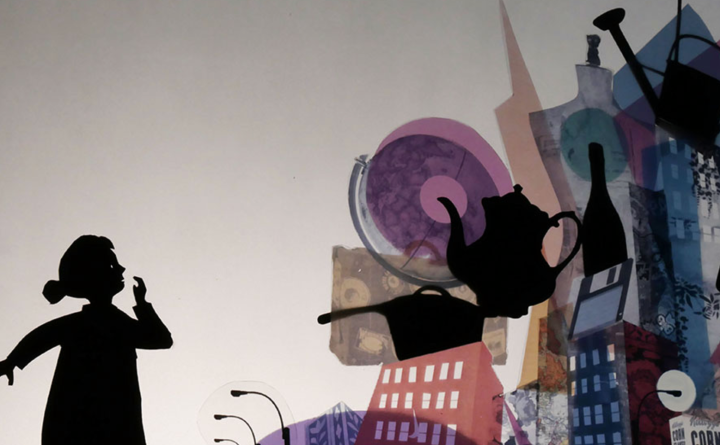 Manual Cinema: Magic City
Manual Cinema: Magic City
What: Manual Cinema: The Magic City
Where: Her Majesty’s Theatre
I love puppet shows and fantasy, so I was predisposed to like The Magic City, which involves both. Based on the 1910 children’s novel of the same name by Edith Nesbit, this updated version by Manual Cinema uses old techniques that would have been familiar to the author. It is clever and enchanting, with a simple ‘take-home’ message.
Not being familiar with the original book, I turned to a famous online encyclopaedia, which describes Nesbit as a woman ahead of her time who knew a lot about blended families, the subject of this production. The story follows nine-year old Philomena, an orphan, adopted by her loving and lovely older half-sister, Helen. Together they create fantasy worlds out of household junk and live the kind of life that children might fantasise about. So when Helen announces her relationship with Brandon, Philomena is jealous and hurt, and she projects her anger onto Brandon’s seven-year old son, Lucas.
The actors, when they are in the ‘here and now’, have their images’ projected onto a large overhead screen from a live-feed camera. They mime their words to the soothing narration of Maren Celest, who tells the story with the backing of a small music ensemble. However, most of her story is set in a light-and-shadow fantasy world, where the actors are silhouetted, and clever handmade props create a world within a world which we also watch on an overhead screen, whilst seeing how it is created below.
The children enter this fantasy world where Helen and Brandon are on their honeymoon. This world is threatening; bottle-openers walk the streets and hammers loom. Despite the potential peril, Philomena deserts Lucas as she searched for Phil-Helen-ia, the Magic City, where she can once again be alone with her beloved sister-mother.
 Manual Cinema: Magic City
Manual Cinema: Magic City
There are many walls in this fantasy world, built to keep the bad things out. I have no idea whether this contemporary allusion to borders, refugees and exclusion were features of Nesbit’s original work, but the walls must be demolished to allow relationships to be mended. And Philomena’s personified anger must be defeated, and recognised for what it is: fear of change.
In the end, ‘right’ prevails, perhaps reflecting how Nesbit herself came to terms with her blended family when she chose to adopt her husband’s lover’s child (more than once) and allow the mother to live with them as their housekeeper.
The show is aimed at all ages, but is perhaps too obviously a morality tale and too simple for those who are familiar with nuance and uncertain endings. We could not fail to grasp the message that acceptance of others is necessary.
The production is enchanting, clever, and well-delivered. The timing is precise and the production smooth. It is impressive, but not a scary production, despite its angry monster. Afterwards, the audience is invited onto the stage to look around, have a go and meet the cast; a sweet, inclusive and welcoming act.
I loved this show for its cleverness, the mingling of the real with the silhouettes and shadow puppets, the actors were perfect and the music a great fit. It was a black and white morality tale depicted in light and shadows. But now I want to find out more about the more complicated and interesting Edith Nesbit.
3 1/5 out of 5 stars
– Maggi Boult
